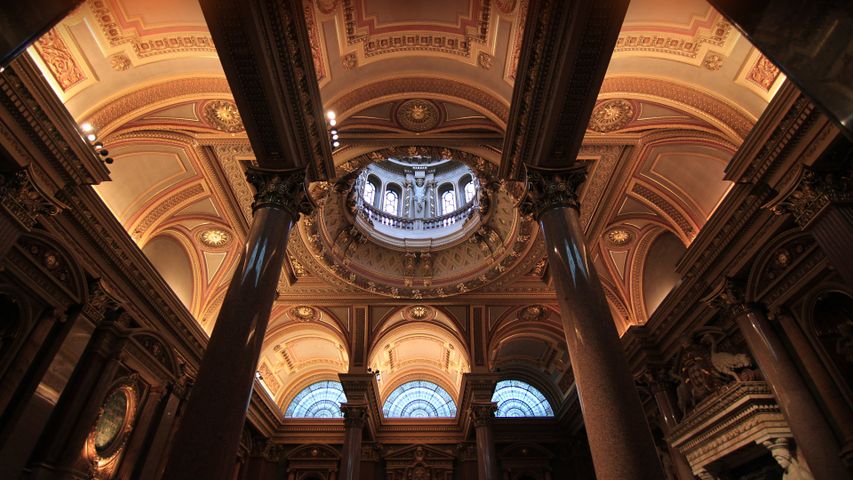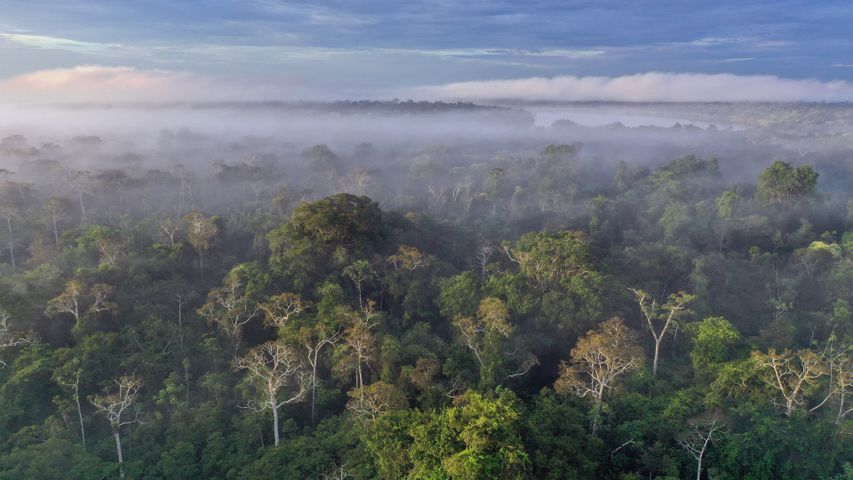Amazon rainforest with fog in the morning near Alta Floresta, Mato Grosso, Brazil
© Pulsar Imagens/Alam
Mists over the Amazon
The Amazon rainforest is big. Almost unimaginably big. It covers about 2% of the world's surface area, nearly 2.1 million square miles across South America, mostly (nearly 60%) in the country you see here, Brazil. It is home to over half of the Earth's remaining rainforests, nearly 16,000 different tree species, 40,000 species of other plants, 2.5 million insect species and over 2,000 different types of birds and mammals. Incredibly, perhaps a tenth of the planet's known species live here, many of which have not even been identified.
Yet, despite its vastness and ecological riches, the Amazon and the world's rainforests in general are in jeopardy, with large swaths being stripped and spoiled every day. Recent analysis suggests that the Amazon rainforest, long known as the Lungs of the World, is now spewing out as much greenhouse gas as it can store, because of rampant deforestation. If true, this is a bad sign in our battle against climate change. Rainforests play a vital 'carbon sink' role in creating and maintaining the air that we breath. The more we learn about rainforests, the more we appreciate how our own future, and the future of our planet, depends upon their health.
Related Images
Bing Today Images




 Mist over lowland rainforest, Danum Valley, Sabah, Borneo, Malaysia
Mist over lowland rainforest, Danum Valley, Sabah, Borneo, Malaysia
 Amazon rainforest, Brazil
Amazon rainforest, Brazil
 Bwindi Impenetrable National Forest, Uganda
Bwindi Impenetrable National Forest, Uganda
 Cowichan Valley, Vancouver Island, British Columbia, Canada
Cowichan Valley, Vancouver Island, British Columbia, Canada
 Bordeaux, France
Bordeaux, France
 Amazon rainforest, Peru
Amazon rainforest, Peru
 Back Tor on a foggy morning, Great Ridge, Derbyshire.
Back Tor on a foggy morning, Great Ridge, Derbyshire.
 Trees in Wychwood Forest near Chipping Norton, Oxfordshire
Trees in Wychwood Forest near Chipping Norton, Oxfordshire


